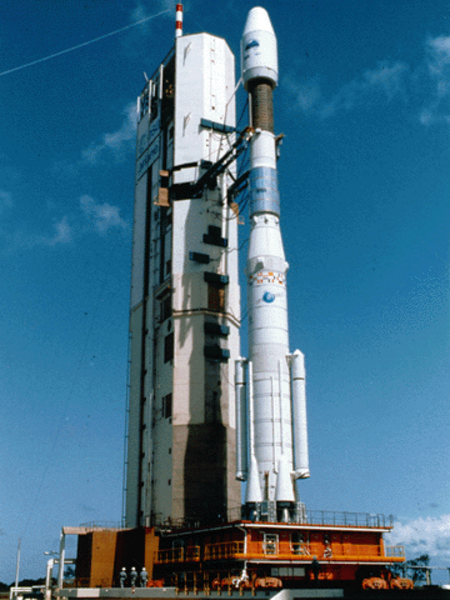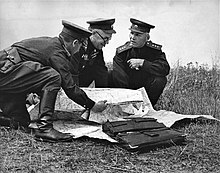Race to Berlin
| |||||||||||||||||||||||||||||||||||||||||||
Read other articles:

Pulau Nyamuk KecilNegaraIndonesiaGugus kepulauanKepulauan SeribuProvinsiDKI JakartaKabupatenKepulauan SeribuLuas- km²Populasi- Pulau Nyamuk Kecil adalah sebuah pulau yang terletak di Kepulauan Seribu di Daerah Khusus Ibukota Jakarta, Indonesia. Lihat pula Kabupaten Administratif Kepulauan Seribu Kepulauan Seribu Pranala luar Situs resmi Kabupaten Administratif Kepulauan Seribu Diarsipkan 2017-02-22 di Wayback Machine. lbsPulau di Kepulauan Seribu Pulau Air Besar Pulau Air Kecil Pulau Ayer …

本條目存在以下問題,請協助改善本條目或在討論頁針對議題發表看法。 此條目需要擴充。 (2013年1月1日)请協助改善这篇條目,更進一步的信息可能會在討論頁或扩充请求中找到。请在擴充條目後將此模板移除。 此條目需要补充更多来源。 (2013年1月1日)请协助補充多方面可靠来源以改善这篇条目,无法查证的内容可能會因為异议提出而被移除。致使用者:请搜索一下条目的标…

Державний комітет телебачення і радіомовлення України (Держкомтелерадіо) Приміщення комітетуЗагальна інформаціяКраїна УкраїнаДата створення 2003Керівне відомство Кабінет Міністрів УкраїниРічний бюджет 1 964 898 500 ₴[1]Голова Олег НаливайкоПідвідомчі орг�…

Las masacres del Triunvirato, de Antoine Caron, 1566. Sección de Villa Capra, de Andrea Palladio (ilustración de I Quattro Libri dell'Architettura, 1570). Detalle de la Capilla de Segismundo, 1535. Ilustración para La Ilíada, John Flaxman, 1795. Las kamienice ormiańskie[1] (casas armenias) de Zamosc, Renacimiento polaco.[2] Casa consistorial de Sevilla. Palacio de Goyeneche, sede de la Real Academia de Bellas Artes de San Fernando, en Madrid. El portal, de Churriguera, fue rem…

Operating system for the Nintendo 3DS Home Menu redirects here. For the system menu accessed while using Wii software, see Home Menu (Wii). For the system menu accessed while using Wii U software, see Home Menu (Wii U). Operating system Nintendo 3DS system softwareThe Nintendo 3DS Home Menu as of system version 9.3.0-21DeveloperNintendo (IRD, SPD, SDD)Written inC++OS familyNintendo proprietaryWorking stateDiscontinuedSource modelClosed sourceInitial release1.0.0-0 / February 26, 2011;&#…

رسم تخطيطي لإنبوب كروكس: المعدات A هو مزود فولتي ضعيف لتسخين الكاثود C (الكاثود البارد كان قد استخدم بواسطة كروكس).[1][2] B هو مزود طاقة عالي الفولتية لتنشيط الأنود المغلف بالفوسفور P. القناع المضلل M يكون متصل بجهد الكاثود, والصورة ينظر فيها إلى الفوسفور كنطاق غير متوهج أ�…

Moss HartHart in 1940Lahir(1904-10-24)24 Oktober 1904New York City, New York, ASWafat20 Desember 1961(1961-12-20) (umur 57)Palm Springs, California, ASPasanganKitty Carlisle (m. 1946; kematiannya 1961)Anak2 Moss Hart (24 Oktober 1904 – 20 Desember 1961) adalah seorang pengarang drama dan pengarah teater asal Amerika. Masa kecil Hart lahir di New York City dari pasangan Barnett Hart, seorang pembuat rokok, dan Lillian Solomo…

2018 Missouri State Auditor election ← 2014 November 6, 2018 2022 → Nominee Nicole Galloway Saundra McDowell Party Democratic Republican Popular vote 1,209,881 1,070,701 Percentage 50.4% 44.6% County resultsCongressional district results Precinct resultsGalloway: 40–50% 50–60% 60–70% 70–80% 80–90% &…

NASDAQ MarketSite di Times Square. Ekonomi New York City adalah ekonomi reegional terbesar di Amerika Serikat dan terbesar kedua di dunia setelah Tokyo.[1] Dibantu Wall Street di Lower Manhattan, New York City merupakan ibu kota keuangan dunia bersama kota London[2][3][4][5][6][7][8] dan merupakan tempat berdirinya New York Stock Exchange, bursa saham terbesar di dunia menurut kapitalisasi pasar perusahaan terdaftar. New York dikena…

Condition in which the value of a measurement or observation is only partially known In statistics, censoring is a condition in which the value of a measurement or observation is only partially known. For example, suppose a study is conducted to measure the impact of a drug on mortality rate. In such a study, it may be known that an individual's age at death is at least 75 years (but may be more). Such a situation could occur if the individual withdrew from the study at age 75, or if the individ…

Suburb in Enfield, London Human settlement in EnglandForty HillForty HillForty HillLocation within Greater LondonOS grid referenceTQ336981London boroughEnfieldCeremonial countyGreater LondonRegionLondonCountryEnglandSovereign stateUnited KingdomPost townENFIELDPostcode districtEN1, EN2Dialling code020PoliceMetropolitanFireLondonAmbulanceLondon UK ParliamentEnfield NorthLondon AssemblyEnfield and Haringey List of places UK England London 51°39′57″…

Municipality in Grisons, SwitzerlandBrusioMunicipality Coat of armsLocation of Brusio BrusioShow map of SwitzerlandBrusioShow map of Canton of GrisonsCoordinates: 46°15′N 10°8′E / 46.250°N 10.133°E / 46.250; 10.133CountrySwitzerlandCantonGrisonsDistrictBerninaArea[1] • Total46.29 km2 (17.87 sq mi)Elevation780 m (2,560 ft)Population (31 December 2018)[2] • Total1,114 • Density24/km2 (…

Mountain and park in Georgia, United States This article is about the mountain in the U.S. state of Georgia. For the nearby city, see Stone Mountain, Georgia. For other uses, see Stone Mountain (disambiguation). Stone MountainThe mountain viewed from a distanceHighest pointElevation1,686 ft (514 m)Prominence825 ft (251 m)Coordinates33°48′21.40″N 84°8′43.52″W / 33.8059444°N 84.1454222°W / 33.8059444; -84.1454222GeographyStone MountainSt…

American boxer (born 1967) Riddick BoweBowe in 1993BornRiddick Lamont Bowe (1967-08-10) August 10, 1967 (age 56)[2]New York City, New York, U.S.Other namesBig DaddyStatisticsWeight(s)HeavyweightHeight6 ft 5 in (196 cm)[1]Reach81 in (206 cm)[1]StanceOrthodox Boxing recordTotal fights45Wins43Wins by KO33Losses1No contests1 Medal record Men's amateur boxing Representing United States Olympic Games 1988 Seoul Super heavyweight Pan Amer…

This article's lead section may be too short to adequately summarize the key points. Please consider expanding the lead to provide an accessible overview of all important aspects of the article. (October 2022) #6122 on the Q52 SBS heading north toward Elmhurst #200 on the Q25 Limited heading south toward Jamaica. The Metropolitan Transportation Authority (MTA) operates a number of bus routes in Queens, New York, United States, under two different public brands. Some of them are the direct descen…

Pertempuran BiakTanggal27 Mei 1944- 22 Juni 1944LokasiBiak, Teluk Cenderawasih, kini wilayah IndonesiaHasil Kemenangan Amerika SerikatPihak terlibat Amerika Serikat Kekaisaran JepangTokoh dan pemimpin Mayjen Horace Hayes Fuller Letjen Robert L. Eichelberger Laksma William Morrow Fechteler Kol. Kuzume NaoyukiKekuatan Darat:12.000 infantri,29 artileri medan,12 tankLaut:Gugus Tugas 77 Kelompok Serang 2Udara: Komando AU ke-5 dan ke-13 dari Nadzab dan Kepulauan Admiralty, sejumlah A-20 dari pangkalan…

Ariane 4 adalah sistem peluncuran sekali pakai, dirancang oleh National Centre d'Etudes Spatiales dan diproduksi dan dipasarkan oleh anak perusahaan Arianespace . Ariane 4 yang dikenal sebagai ‘workhorse’ dari keluarga Ariane . Sejak penerbangan pertama pada tanggal 15 Juni 1988 sampai yang terakhir, pada tanggal 15 Februari 2003, roket itu membuat 113 peluncuran sukses. Ia dikenal menjadi peluncur sangat serbaguna. Ariane 4 terbukti ideal untuk meluncurkan komunikasi dan satelit observasi B…

Vous lisez un « bon article » labellisé en 2013. Pour les articles homonymes, voir Jeux olympiques de 1932. Jeux olympiques d'hiver de 1932 Localisation Pays hôte États-Unis Ville hôte Lake Placid Coordonnées 44° 17′ 08″ N, 73° 59′ 07″ O Date Du 4 au 13 février 1932 Ouverture officielle par Franklin Delano RooseveltGouverneur de l'État de New York Participants Pays 17 Athlètes 252(220 masc. et 32 fém.) Compétition Nombre de sports 4 N…

Михаэль Скиббе Общая информация Родился 4 августа 1965(1965-08-04)[1] (58 лет)Гельзенкирхен, Мюнстер, Северный Рейн-Вестфалия, ФРГ Гражданство Германия Рост 180 см Позиция полузащитник Информация о клубе Клуб Санфречче Хиросима Должность главный тренер Молодёжные клубы 1975—19…

Chinese puppet state of the Empire of Japan Provisional Governmentof the Republic of China中華民國臨時政府Zhōnghuá Mínguó Línshí ZhèngfǔChūka Minkoku Rinji Seifu1937–1940 Five Races Under One Union FlagMotto: Xinminism [ja]Anthem: Song to the Auspicious Cloud(1937–1940)[a]StatusUnrecognized statePuppet state of the Empire of JapanCapitaland largest cityBeijingCommon languagesChineseGovernmentDictatorshipPresident of the Executive Council&#…


